Q
where is toyota corolla cross made
The Toyota Corolla Cross, as a global strategic model, has its production locations adjusted based on different market demands. The versions sold in the Malaysian market mainly come from Toyota's plant in Chonburi, Thailand. This factory is a crucial production base for Toyota in Southeast Asia, specializing in manufacturing several models for the ASEAN market, including the Corolla Cross, with manufacturing standards meeting Toyota's global unified quality requirements. It's worth noting that Thai-built Corolla Cross models have their configurations optimized for tropical climate conditions, such as enhanced air conditioning cooling efficiency and the use of rust-resistant materials, which are very practical for Malaysian consumers. Besides Thailand, the Corolla Cross has other production bases worldwide, such as in China, the United States, and Brazil. However, there are differences in configurations and powertrain options among models from different origins. The Malaysian market currently mainly consists of Thai-imported 1.8L petrol and hybrid versions. For Malaysian consumers looking to buy this car, they can be confident in its manufacturing quality. At the same time, it's advisable to thoroughly understand the specific configurations and warranty policies of the local specifications before making a purchase to ensure a better ownership experience.
Special Disclaimer: This content is published by users and does not represent the views or position of PCauto.
Related Q&A
Q
What Segment is Toyota Corolla Cross?
The Toyota Corolla Cross is classified as a C-Segment SUV in the Malaysian market. It belongs to the compact crossover SUV category. Its body size and positioning are between the B-Segment and D-Segment, making it suitable for consumers who pursue both space functionality and flexible driving. This vehicle is built on the Toyota TNGA-C platform and offers two engine options: a 1.8L naturally aspirated engine and a 1.8L hybrid engine. The wheelbase reaches 2640mm. The rear legroom and the 436-liter trunk volume (319 liters for the hybrid version) are outstanding among its peers. At the same time, it comes standard with the Toyota Safety Sense active safety system, which includes pre-collision warning, lane-keeping assist and other configurations.
For Malaysian users, the ground clearance of the Corolla Cross (161mm) can adapt to the local variable road conditions. The hybrid version has become a popular choice thanks to its fuel efficiency of 23.8km/L. It is worth noting that in Malaysia, the C-Segment also includes competitors such as the Honda HR-V and the Mazda CX-30. Consumers can compare the differences between different brands in terms of intelligent configurations (such as wireless charging and panoramic sunroof) and after-sales warranty conditions (Toyota offers a 5-year unlimited mileage warranty). This type of vehicle usually targets young families or first-time buyers upgrading to an SUV. It is recommended to test drive the vehicle in person before purchasing to see if the suspension tuning and noise insulation meet your needs.
Q
What is the Reslae Value of Toyota Corolla Cross?
The Toyota Corolla Cross has performed quite well in terms of second - hand car resale value in Malaysia. This is mainly due to the high recognition of the Toyota brand in the local area, as well as the reliability and practicality of this car itself. As a popular compact SUV, the Corolla Cross can usually maintain a relatively high resale value in the second - hand car market thanks to its fuel efficiency, low failure rate, and extensive after - sales service network. Generally speaking, a three - year - old Corolla Cross can retain about 60% to 70% of its original price. The specific price will vary depending on the vehicle's condition, mileage, and configuration.
In addition, Malaysian consumers generally prefer Japanese cars, especially Toyota models. This brand loyalty further supports its second - hand car value. If you plan to buy or sell a Corolla Cross, it is recommended to have regular maintenance and keep a complete maintenance record, which can help you get a better price during the transaction. At the same time, understanding the current market conditions and the second - hand car prices of competitors can also give you more confidence in buying or selling.
Q
How Many CC is the Toyota Corolla Cross?
The Toyota Corolla Cross comes with two engine options in the Malaysian market. The petrol model is powered by a 1.8L 2ZR-FBE naturally aspirated engine with a displacement of 1798cc. The hybrid version also features a 1.8L 2ZR-FXE engine, paired with an electric motor system, and shares the same 1798cc displacement.
Both engines are finely tuned by Toyota to strike a balance between power and fuel efficiency, making them well-suited for both daily city driving and longer highway trips in Malaysia.
Engine displacement (CC) measures the total volume of the engine’s combustion chambers. While it often relates to power and fuel consumption, real-world performance also depends on factors like engine technology, vehicle weight, and transmission setup.
As a global strategic model, the Corolla Cross is known for its reliable engine tech and relatively low maintenance costs. It’s a solid choice for Malaysian drivers. If you’re looking for better acceleration and smoother performance, the hybrid version with its electric motor support is definitely worth considering.
Q
What is the Engine in Toyota Corolla Cross?
The Toyota Corolla Cross offers two powertrain options in the Malaysian market, namely a 1.8-liter naturally aspirated gasoline engine and a 1.8-liter hybrid system. The 1.8-liter gasoline engine, coded as 2ZR-FE, uses Dual VVT-i dual variable valve timing technology. It has a maximum output power of 139 horsepower and a peak torque of 172 Nm. It is paired with a 7-speed CVT gearbox, which features smooth operation and fuel efficiency.
The hybrid version is equipped with a 1.8-liter 2ZR-FXE Atkinson cycle engine, combined with an electric motor to form the THS II hybrid system. The combined power reaches 121 horsepower, and it has better fuel consumption performance, making it particularly suitable for the frequent stop-and-go traffic conditions in Malaysian cities.
Both engines have been carefully tuned by Toyota. They perform excellently in terms of durability and maintenance cost, meeting the Malaysian consumers' demand for reliability. It's worth mentioning that Toyota's hybrid technology has built up a good reputation in the local market over the years, and the battery pack also comes with a warranty of up to 8 years, giving car owners more peace of mind.
Whether it's the traditional fuel version or the hybrid version, the Corolla Cross can meet the daily commuting needs. Consumers can choose the most suitable powertrain configuration according to their budget and usage habits.
Q
What is the Gearbox Type of the Toyota Corolla Cross?
In Malaysia, the Toyota Corolla Cross comes with two types of gearboxes, depending on the powertrain. The petrol models use a Direct Shift-CVT, which combines the smooth feel of a regular CVT with a built-in launch gear for better low-speed response. The hybrid version, on the other hand, uses an E-CVT (Electronic Continuously Variable Transmission) that's specially designed for hybrid systems and uses a planetary gear setup for efficient power delivery.
Both gearboxes are tuned by Toyota to offer a good balance of fuel efficiency and comfort, making them a solid fit for Malaysia’s varied road conditions. CVTs are popular here thanks to their simple design and lower maintenance costs, while E-CVTs are better suited for those who care about saving fuel and reducing emissions. Whichever you choose, Toyota’s transmission tech is known for being reliable and easy to live with.
Q
What is the PCD Size of the Toyota Corolla Cross?
In Malaysia, the Toyota Corolla Cross has a PCD (Pitch Circle Diameter) of 5x114.3mm. This means the wheel hub has 5 bolt holes arranged evenly on a circle with a diameter of 114.3mm. This size matches many popular Japanese models like the Honda CR-V and Mazda CX-5, making it easier for owners to find compatible wheels or upgrade their brakes.
Knowing the correct PCD size is important when changing wheels or fitting spacers. If the size doesn’t match, it can cause shaking or even safety issues while driving.
Besides PCD, Malaysian buyers should also check the center bore diameter (CB) and offset (ET value) when choosing wheels. It’s best to confirm these specs with professional tyre shops or official dealers to ensure a perfect fit. Also, when upgrading wheels, keep the overall diameter close to the original to avoid affecting your speedometer or suspension life. For major changes, consult a certified technician to make sure your modifications meet JPJ regulations.
Q
Is Toyota Corolla Cross a Good Car? Learn the Pros and Cons Here
The Toyota Corolla Cross is a well-liked compact SUV in Malaysia, and for good reason. It offers the kind of reliability you’d expect from Toyota, plus a practical layout and low running costs—great for daily family use. You can choose between a 1.8L petrol engine or a hybrid system, both of which are fuel-efficient and handle local road conditions and petrol prices well. The standard Toyota Safety Sense (TSS) package adds features like lane keeping and automatic emergency braking, which help boost overall safety.
That said, the interior does use quite a bit of hard plastic, and cabin insulation isn’t the best in its class. Taller passengers might also find the rear seat a little tight.
One thing buyers in Malaysia will appreciate is that the Corolla Cross has been tuned to suit the local climate—it has strong air-conditioning and good anti-rust protection. Plus, Toyota’s wide service network makes maintenance easy and worry-free.
If your budget allows, the hybrid version could save you more on fuel in the long run. Just keep in mind that battery health can be affected by heat, so it’s a good idea to get it checked regularly in Malaysia’s tropical weather.
Q
What is the Width of Toyota Corolla Cross?
The body width of the Toyota Corolla Cross is 1,825 millimeters. This dimension places it in the upper - middle range among compact SUVs in the Malaysian market, offering relatively spacious seating and stable driving performance. As a hot - selling model, the Corolla Cross has won the favor of many family users in Malaysia thanks to its reasonable body size and practicality. Its width not only ensures the comfort of lateral space inside the car but also helps improve the vehicle's stability when cornering.
For Malaysian consumers, understanding the vehicle's dimensions is very important as it is closely related to the convenience of daily driving, especially on narrow urban roads or when parking. In addition to the width, other dimension data of the Corolla Cross are also worthy of attention. For example, its wheelbase is 2,640 millimeters, which further guarantees the legroom for rear - seat passengers.
In Malaysia's rainy climate, the wider body can provide better driving stability, especially at high speeds or on slippery roads. When choosing an SUV, body size is one of the factors that need to be considered comprehensively. The well - balanced performance of the Corolla Cross makes it a worthy option in the Malaysian market.
Q
What is the Road Tax Price of Toyota Corolla Cross? How to Calculate it?
In Malaysia, the road tax for the Toyota Corolla Cross depends on engine size. The 1.8L petrol model falls under the 1801cc–2000cc category, which costs RM379 per year. The hybrid version has the same engine size, so it technically falls under the same category, but hybrids are often eligible for discounts, depending on the latest government policies.
To get the exact figure, you can check the JPJ rate table or use online platforms like MyEG or the JPJ website to calculate and pay your road tax.
Malaysia uses a progressive road tax system, which means the cost jumps significantly as engine size increases. For example, cars in the 2001cc–2500cc range pay RM834 per year. So when you're buying a car, don’t forget to consider these long-term costs.
Besides road tax, it’s also mandatory to buy insurance. At the very least, you’ll need third-party coverage, but many drivers go for comprehensive plans for better protection.
Also, make sure your road tax sticker is always valid and visible. Driving with an expired or missing sticker can get you fined, or even worse, your car could be impounded. If you lose the sticker, just apply for a new one through JPJ to stay on the safe side.
Q
What Is the Toyota Corolla Cross Engine Oil Capacity?
For the Malaysian-spec Toyota Corolla Cross, the 1.8L petrol engine (2ZR-FE) takes about 4.2 liters of engine oil if you're also changing the oil filter. The hybrid version (2ZR-FXE), which uses an Atkinson-cycle design, requires slightly less which is around 3.9 liters.
Toyota recommends using 0W-16 or 5W-30 low-viscosity oil, which works well in Malaysia’s hot and humid climate.
Since the weather here can wear down oil faster, it’s a good idea to check your oil level every 5,000 km or six months, and even more often if you’re always stuck in traffic or drive long distances.
When choosing oil, go for ones that meet API SP/GF-6 or ILSAC standards. These oils help prevent sludge build-up caused by frequent stop-and-go driving. Toyota Genuine Motor Oil is designed for local conditions, but Shell Helix, Castrol Edge, or other reputable brands are also solid choices as long as they meet the spec.
If you're extra careful, you can even use oil test strips to check if the oil still protects well. This is especially useful for keeping your engine’s VVT-i system in top shape.
Latest Q&A
Q
What kind of oil does 2018 Passat use?
For the 2018 Volkswagen Passat in Malaysia, the recommended oil specs typically call for synthetic oils that meet VW 502 00 or VW 504 00 standards, with viscosity grades of 5W-30 or 5W-40 being the go-to choices. Your final pick should really depend on your actual driving conditions and habits though – here in Malaysia's hot climate, for example, 5W-40 might be the better bet thanks to its stronger high-temperature protection.
Sticking to regular oil changes is huge for keeping your engine running strong long-term. As a general rule, aim to change it every 10,000 kilometers or 12 months, whichever comes first. Also, when you're picking out oil, always double-check that it has international certifications like API SN or ACEA A3/B4 – that's your guarantee of reliable quality.
If your Passat has a diesel engine or is a high-performance variant, it might need a specific oil type, so your best move is to check the owner's manual or have a chat with an authorized service center. It's also handy to know what those oil numbers mean – "5W" tells you about cold-weather flow, while "40" refers to hot-temperature thickness. A little knowledge here goes a long way in helping you make the smartest choice for your car.
Q
Does a 2018 Volkswagen Passat have a turbo?
The 2018 Volkswagen Passat in Malaysia does come with a turbocharged engine, specifically a 1.8-liter TSI turbocharged petrol unit. This engine pushes out 180 horsepower and 250 Nm of torque, and it's a solid combo of turbo tech and direct injection that delivers great power while still being kind on fuel – perfect for both city commuting and those longer highway drives we Malaysians love. Turbocharging works by compressing the intake air, which boosts engine efficiency and power, so you get plenty of torque even at low revs, making acceleration feel smooth and effortless.
On top of that, the 2018 Passat also gets VW's DSG dual-clutch gearbox, which really sharpens up the shifts and makes the whole driving experience that much more engaging. For Malaysian buyers, a turbo engine isn't just about daily driving needs; it also gives you that extra oomph for confident overtaking on the highway. And let's not forget, Volkswagen's reputation for reliability and their widespread after-sales network here mean owning one is pretty hassle-free.
If turbo tech has caught your interest, it's worth checking out turbo models from other brands like Toyota or Honda too – each has their own engineering twists. But when it comes to balancing power and fuel efficiency, VW's TSI engines really stand out from the pack.
Q
Are there any recalls on a 2018 VW Passat?
For the record, the 2018 Volkswagen Passat was subject to safety-related recalls in certain markets. In North America, for instance, a recall was issued due to a potential fault in the fuel pump control unit that could lead to stalling. As for the Malaysian market, it's best to refer to official Volkswagen announcements there. We recommend owners check via the recall inquiry page on Volkswagen Malaysia's website by entering their Vehicle Identification Number (VIN) or contact an authorized service center directly, as recall situations can vary by region based on local regulations and vehicle specifications.
Staying on top of recall information is a key part of vehicle maintenance, especially for updates involving critical components like airbags, fuel systems, or electronic stability programs. Even if your Passat isn't part of a recall, sticking to the manufacturer's maintenance schedule is crucial to keep it running at its best. For more details on common upkeep points specific to the Passat—think DSG transmission care or turbocharged engine maintenance tips—reaching out to local Volkswagen technicians is the way to go for personalized advice.
Q
What is the fuel consumption of the 2018 Volkswagen Passat?
The 2018 Volkswagen Passat's fuel economy in the Malaysian market varies depending on the powertrain. The 1.8-liter TSI turbocharged engine variant delivers a combined fuel consumption of around 6.5 liters per 100 kilometers, while the 2.0-liter TSI model is slightly thirstier at approximately 7.2 liters per 100 kilometers. Real-world figures, of course, can fluctuate based on driving habits, road conditions, and maintenance upkeep.
Riding on Volkswagen Group's proven MQB platform and paired with a DSG dual-clutch transmission, this model strikes a nice balance between power delivery and fuel efficiency – ideal for both city commutes and highway stretches across Malaysia. It's worth highlighting how turbocharging technology effectively boosts performance from smaller-displacement engines while keeping fuel consumption relatively low, a trend we've seen increasingly adopted in mid-size sedans here in the local market.
To keep your Passat running at its most efficient, regular maintenance is key. Make sure to replace the air filter and spark plugs as scheduled, and always use engine oil that meets the manufacturer's specifications. These simple steps go a long way in preserving optimal fuel economy over time.
If you're in the market for a used Passat, do yourself a favor and check the complete service history through official channels. It's the best way to ensure the vehicle still performs as well as it did when it left the factory.
Q
Why is my 2018 Passat not starting?
There are a few common reasons why your 2018 Passat might be refusing to start. First up, battery issues. Malaysia's hot and humid climate can really take a toll on battery life, so it's worth checking if the voltage has dropped below 12.4 volts or if the terminals are looking corroded.
Next, a faulty starter motor or alternator could be the culprit – both can leave you short on electrical power. Don't rule out fuel system problems either, like a busted fuel pump or a clogged fuel filter. These tend to happen more often if you've been using low-quality petrol regularly.
Then there's the ignition system; worn spark plugs or a dodgy ignition coil can definitely make starting a hassle. If your Passat has a smart key, don't forget to check if the key fob battery is dead, which might stop the car from recognizing it.
If any warning lights are flashing on the dashboard – especially the check engine light – hook up an OBD scanner to read the trouble codes as soon as you can. For regular maintenance, swap out the battery every 2-3 years, stick to the recommended fuel grade, and replace the spark plugs around every 60,000 kilometers. These simple steps can go a long way in preventing starting headaches. If you've checked all this and still can't get it going, best to reach out to an authorized service center for a professional diagnosis.
View MoreRelated News

Toyota Corolla Cross mid-term facelift in China, featuring a new front face and interior design
AshleySep 29, 2025
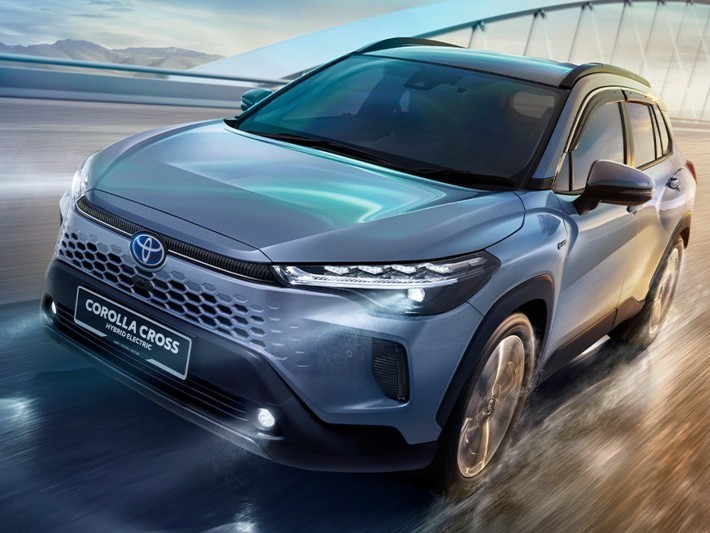
Toyota Corolla Cross Design Revealed: A Versatile Model Combining Practicality and Comfort
AshleyJul 16, 2025

Toyota Unveils All-New Corolla Cross, Introduces GR SPORT Trim for the First Time
JohnMay 8, 2025
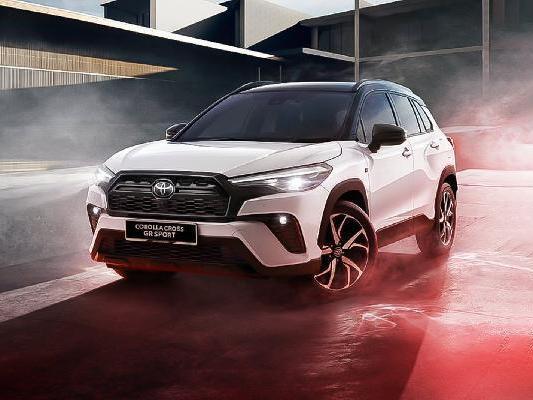
Unveiling the Toyota Corolla Cross Floor Price, super detailed car buying guide!
JohnMar 25, 2025
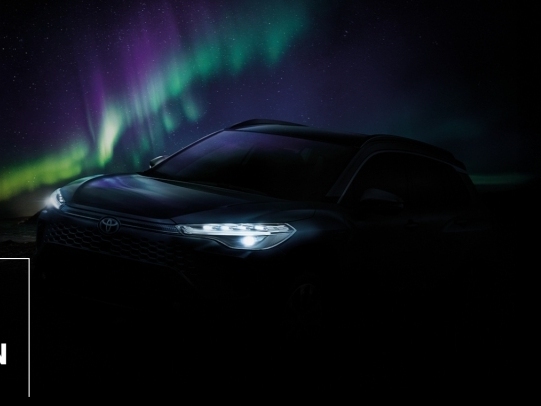
The new Corolla Cross is about to hit the market, this car will reveal Toyota's future design style.
WilliamNov 21, 2024
View More


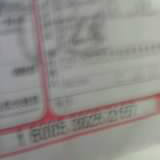









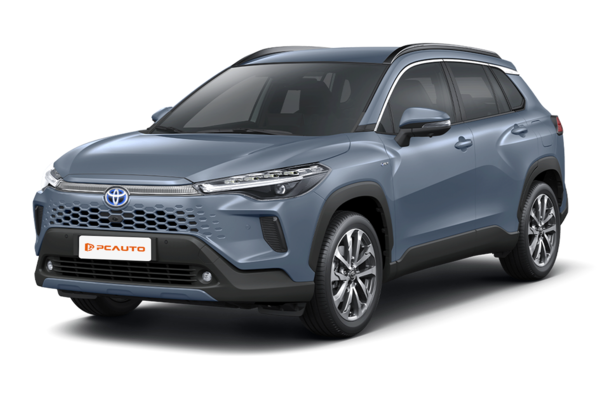





Pros
Cons